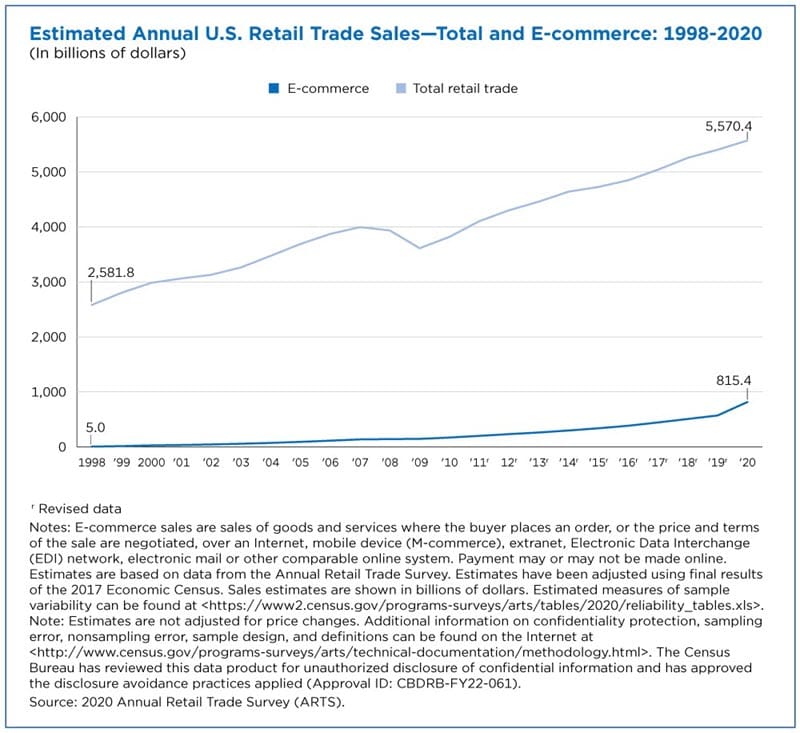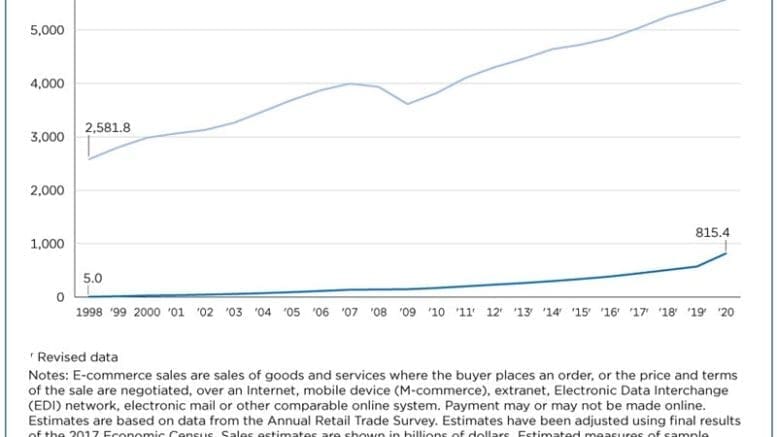E-commerce surged due to the COVID-19 pandemic as people stayed home and found alternative ways to shop.
According to an article by Mayumi Brewster posted on the U.S. Census Bureau’s website, “because of these consumer behavior changes, e-commerce has continued to grow and many brands have been pivoting their business strategies to remain competitive.”
Brewster is a survey statistician in the Census Bureau’s Economic Management Division.
The supporting data in the article is primarily from he Census Bureau’s Annual Retail Trade Survey (ARTS).
This survey first released data in 1952, and “now produces national estimates of total annual sales, e-commerce sales, sales taxes, end-of-year inventories, purchases, total operating expenses, per capita sales, and gross margins of U.S. retail businesses.”
ARTS began collecting e-commerce data in 1998. That year sales were $5 billion. Now e-commerce accounts for a market of over $800 billion.
The pandemic accelerated that growth.
Brewster writes:
According to the most recent 2020 ARTS release, e-commerce sales increased by $244.2 billion or 43% in 2020, the first year of the pandemic, rising from $571.2 billion in 2019 to $815.4 billion in 2020.

The effects of the pandemic were uneven, and affected different retail industries in different ways.
Here’s how Brewster’s report shows different U.S. retail sectors fared in this virtual world:
- Sales at gasoline stations fell from $513.5 billion in 2019 to $428.1 billion in 2020, as commuting became unnecessary for many and travel slowed down.
- Sales at bookstores dropped from $8.9 billion in 2019 to $6.2 billion in 2020.
- Sales at clothing and clothing accessories stores slipped from $269.5 billion in 2019 to $201.4 billion in 2020, as the need for new clothes and accessories for the workplace or social outings waned.
Brewster’s article reports some of the ways brick-and-mortar stores are adapting to the world of e-commerce, including special in-store events to lure customers in, and accepting in-store returns of goods purchased on line.
>> Follow this link to read the complete article

